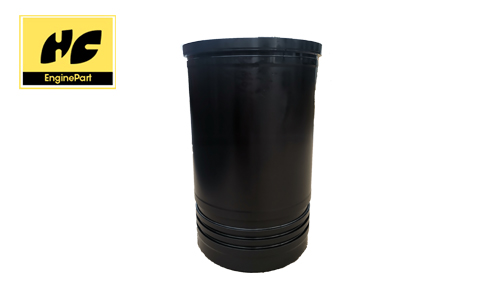Features of wet cylinder liner
2021-01-04
The characteristic of the wet cylinder liner is that its outer surface is in direct contact with the coolant. In addition, it is thicker than the dry cylinder liner. The radial positioning of the wet cylinder liner generally relies on the upper and lower two protruding annular belts with clearance fit between the cylinder block, and the axial positioning uses the lower plane of the upper flange.

The lower part of the cylinder liner is sealed by 1-3 heat-resistant and oil-resistant rubber sealing rings. There are two types of seals: expansion seal and compression seal.
With the increasing enhancement of diesel engines, the cavitation of wet cylinder liners has become a prominent problem. Therefore, some diesel engine cylinder liners have three sealing rings. The upper part of the upper part of the cylinder is in contact with the coolant, which can prevent the mating surface from rusting. It is easy to disassemble and assemble, and it can absorb vibration and reduce cavitation. Some upper and middle two channels are made of ethylene-propylene synthetic rubber to seal the coolant; the lower one is made of silicone material to seal the engine oil. The two cannot be installed incorrectly. Some also install the sealing ring on the cylinder to improve the rigidity of the cylinder liner. The upper part of the cylinder liner is usually sealed by a metal sheet (copper or aluminum gasket, aluminum gasket for aluminum alloy cylinder block, copper gasket to prevent electrochemical corrosion) on the lower plane of the flange.
The advantage of the wet cylinder liner is that the cylinder block is easier to cast, easy to repair and replace, and has a better heat dissipation effect. The disadvantage is that the rigidity of the cylinder is poor, it is easy to produce cavitation, and it is easy to leak water. It is mainly used for heavy-load engines (almost all diesel engines with a bore above 140mm are used) and aluminum alloy cylinder engines.